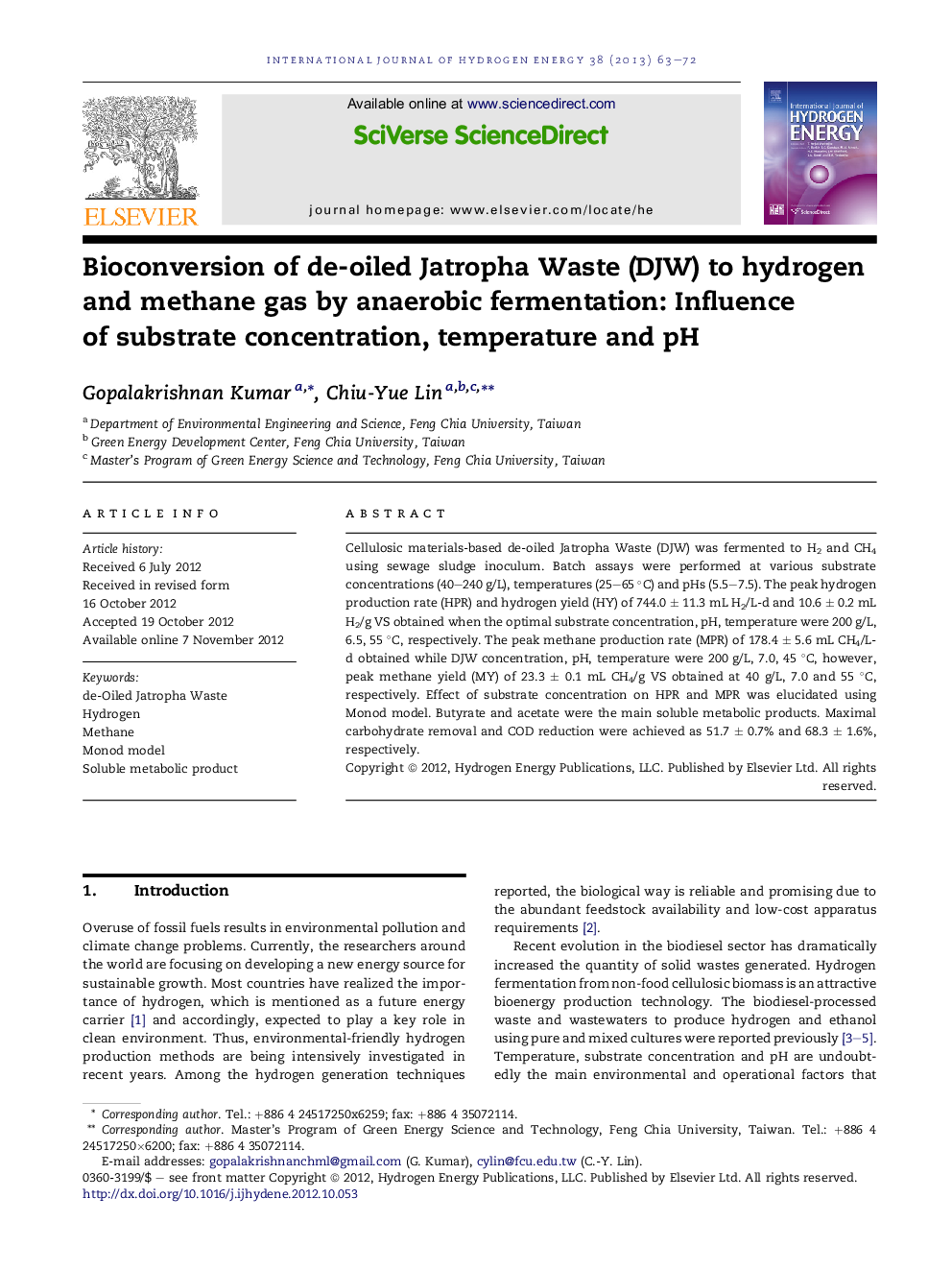| Article ID | Journal | Published Year | Pages | File Type |
|---|---|---|---|---|
| 1274350 | International Journal of Hydrogen Energy | 2013 | 10 Pages |
Cellulosic materials-based de-oiled Jatropha Waste (DJW) was fermented to H2 and CH4 using sewage sludge inoculum. Batch assays were performed at various substrate concentrations (40–240 g/L), temperatures (25–65 °C) and pHs (5.5–7.5). The peak hydrogen production rate (HPR) and hydrogen yield (HY) of 744.0 ± 11.3 mL H2/L-d and 10.6 ± 0.2 mL H2/g VS obtained when the optimal substrate concentration, pH, temperature were 200 g/L, 6.5, 55 °C, respectively. The peak methane production rate (MPR) of 178.4 ± 5.6 mL CH4/L-d obtained while DJW concentration, pH, temperature were 200 g/L, 7.0, 45 °C, however, peak methane yield (MY) of 23.3 ± 0.1 mL CH4/g VS obtained at 40 g/L, 7.0 and 55 °C, respectively. Effect of substrate concentration on HPR and MPR was elucidated using Monod model. Butyrate and acetate were the main soluble metabolic products. Maximal carbohydrate removal and COD reduction were achieved as 51.7 ± 0.7% and 68.3 ± 1.6%, respectively.
► Conversion of de-oiled Jatropha Waste to H2 and CH4 via anaerobic fermentation. ► Peak H2 production rate observed was 744.0 ± 11.3 mL H2/L-d. ► Peak CH4 production rate observed was 178.4 ± 5.6 mL CH4/L-d. ► Temperature, substrate concentration, and pH affect biogas production. ► Soluble metabolic products are a key indicator for the fermentative pathway.
